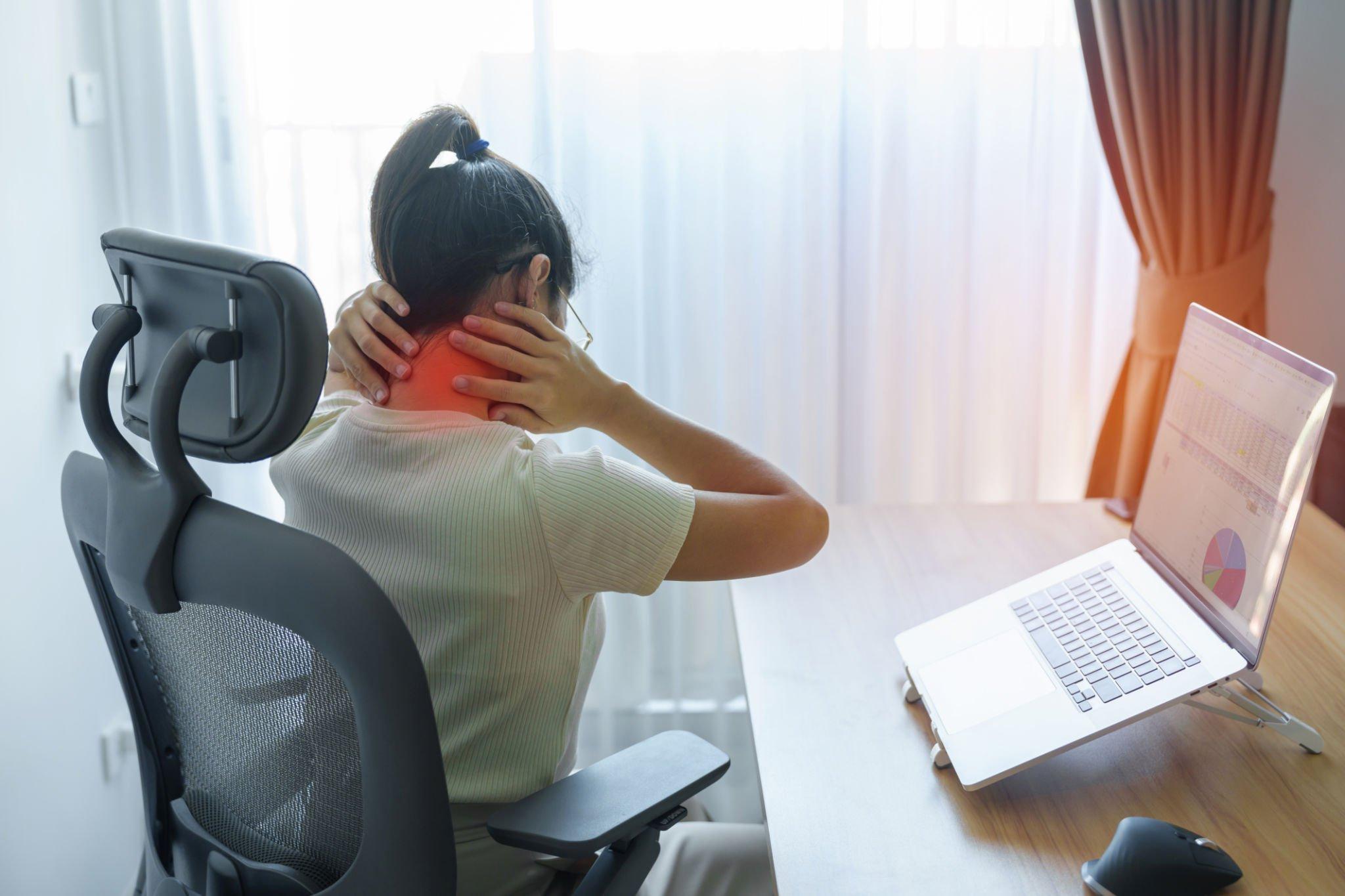Relevium: A Specialized Physiotherapist & Chiropractor
Cervical Spondylosis: Causes, Symptoms, and Treatment

What is Cervical Spondylosis?
Cervical Spondylosis is a broad word used to describe the degenerative changes that occur in the intervertebral discs of the cervical spine as a result of the natural aging process. Over the course of time, cartilage undergoes degeneration, resulting in the loss of volume and the development of dryness and cracks in intervertebral disks. As the intervertebral discs undergo dehydration and shrinkage, manifestations of osteoarthritis emerge, such as the formation of osteophytes, which are bony outgrowths along the periphery of bones. The condition is occasionally referred to as cervical arthritis or cervical osteoarthritis.
Cervical spondylosis is a prevalent condition that exhibits a progressive deterioration pattern as individuals advance in age. Cervical spondylosis affects a majority of those aged 60 and above, with a prevalence exceeding 85%.
Causes Of Cervical Spondylosis
As individuals progress in age, the anatomical components comprising the spinal column and cervical region undergo a steady process of degeneration.
- Discs that have undergone dehydration – The intervertebral discs function as interposed structures that provide cushioning between the individual vertebrae of the spinal column. It has been observed that the intervertebral discs of the majority of individuals start to undergo desiccation and reduction in size around the age of 40. As the intervertebral discs decrease in size, there is an increase in direct contact between the adjacent vertebrae.
- Herniated intervertebral discs – Cracks can also manifest on the outer surface of the spinal discs. The pliable interior of a disk has the ability to pass through these fissures. Occasionally, it exerts pressure on the spinal cord and nerve roots.
- Bone spurs, also known as osteophytes, are bony projections that develop along the edges of bones. As intervertebral discs deteriorate, the human body may exhibit an excessive production of bone tissue in an attempt to fortify the spinal column. In certain cases, bone spurs have the potential to exert pressure on the spinal cord and nerve roots.
- The ligaments exhibit a high degree of rigidity – Ligaments are fibrous structures that serve to link one bone to another. The flexibility of the neck may decrease as individuals age due to the potential stiffening of spinal ligaments.
Signs and Symptoms of Cervical Spondylosis
Most people do not have any signs or symptoms of cervical sponylosis. When signs do show up, pain and stiffness in the neck are common.
- A sore or stiff neck. This could be the most important sign. If you move your neck, the pain may get worse.
- Numbness, tingling, or weakness in the arms, Radiating pain in the affected limb
- Pain around neck and upper back
- Spasms of muscles
- A sound that clicks, pops, or grinds when you move your neck.
- Feeling dizzy
- Headaches
Risk Factors of Cervical Spondylosis
- Age is a risk factor for cervical spondylosis- Cervical spondylosis is likely starts when you’re in your 30s. Nearly nine out of ten people have cervical spondylosis by age 60.
- Job title – Jobs that require the neck to move in the awkward position for prolonged hours like those who use to spend prolonged hours on laptop/desktop.
- Past trauma – Cervical spondylosis seems to be more likely in people who have hurt their necks in the past.
- Tobacco. People who smoke tend to have more neck pain.
- Pick up heavy things like a building worker would, Floor worker, painter
- Feel a lot of vibrations, like people who drive buses or trucks.
Treatment of Cervical Spondylosis
Heat packs: Keeping a hot pack on an affected site can help the muscles relax, bring more blood to the area, and ease cervical spondylosis.
Posture: When you stand up straight, the muscles in your back can support you and take some of the pressure off the joints in your back.
Ergonomics: Make sure that all of your places promote good posture and that your mattress gives your back enough support.
Keep moving: If you sit still for too long with forward neck posture, your neck will “tighten up,” which may make the pain worse.
Exercise plan: is the most important part of recovery. Your therapist will tell you which cervical spondylosis exercises to do first, when to add others, and how to make the exercises harder.
Pain-Relieving Modalities– such as US/IFT, can be used to speed up the healing process by causing chemical changes in the body.
Manipulation is a quick, short thrust that is made at the end of the range. It is used to break up adhesions, unblock a joint, and get full, pain-free movement back. During this process, you might hear a click or other sound.
Mobilisation: Techniques for the cervical spine could include pulling, turning, horizontal glides in the ULTT1 position, and PA glides. The methods are chosen based on how the patient reacts and how the symptoms are moved or lessened.
MFR: which stands for “Soft Tissue Release,” is a method in which the physiotherapist focuses on the painful muscles or fascia and releases them with their hands or other tools, relieving pain.
Physiotherapists support a quick recovery in addition to encouraging behaviours and lifestyle changes that could improve general health and well-being. You can only achieve fitness and rehabilitation through frequent therapy and the use of the best medical procedures and supplies by remaining in touch with your physiotherapist at the proper time. Don’t be late; schedule an appointment with our expert physiotherapist in or WhatsApp at 8929020020. Stay tuned for additional blog updates.
